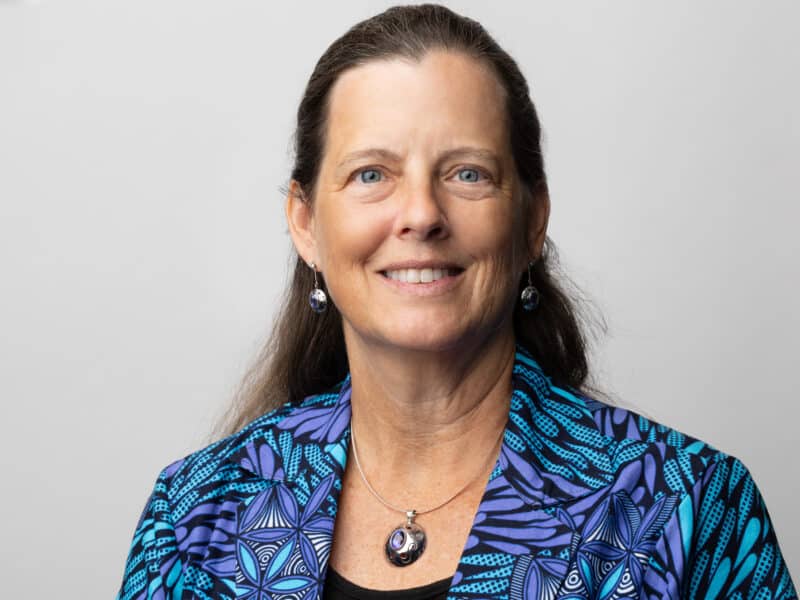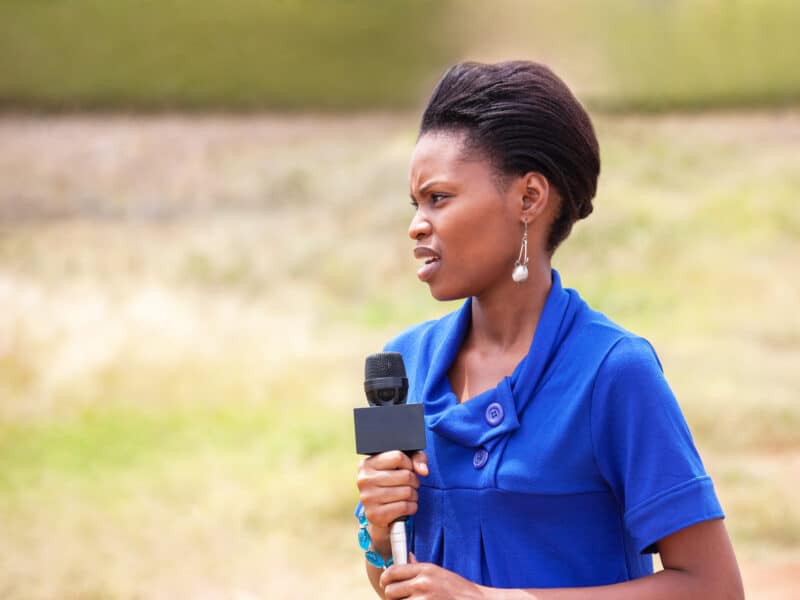Alice Payne Merritt, the Johns Hopkins Center for Communication Programs’ deputy director and COVID-19 team leader, recently sat down with Josh Sharfstein, co-host of Johns Hopkins’ Public Health on Call podcast, to talk about how CCP is sharing COVID-19 messages around the world. Full audio can be found here.
Josh Sharfstein: Thank you so much for joining me today to talk about COVID-19 messaging from around the world. I think it would help if you could start by introducing the Center for Communication Programs at Johns Hopkins.
Alice Payne Merritt: At the Center for Communication Programs at the School of Public Health, we have been focusing on improving health and well-being around the world for about 35 or more years and we focus on positive behavior change using behavioral science theories and evidence to reach people and motivate them to be able to protect their health.
JS: It’s an amazing body of work that you’ve done. How many countries has CCP worked in?
APM: Over these many years, at least 60. We have calculated that we’ve reached well over a billion people.
JS: So now we have a pandemic and health communication is really critical for people to understand what to do to protect themselves and their families. What has been CCP’s role?
APM: We were asked by USAID if we could respond quickly to the COVID-19 pandemic in March as it was emerging. This was through our existing USAID flagship project on social behavior change called Breakthrough ACTION. Beginning in March and over the next month or two, we ended up quickly getting involved in COVID risk communication, community engagement, and just overall COVID prevention in 22 countries around the world from Africa to Asia to Central America. [We] worked with local government, local ministries of health, local coordinating groups, to try to bring everybody together and promote a clear set of messages of COVID prevention so that all the different partners on the ground could speak with one voice.
JS: Now, I understand you’ve brought four clips to play. Tell me about the first one.
APM: The first one takes place in Philippines and is in Tagalog, the local language there. It’s called Bida Solusyon and it plays off the idea of superheroes and being a hero and everyone can be a hero and be the solution to preventing COVID.
Audio Player
JS: Wow, you really get excited listening to that one!
APM: I think you can hear the classical superpower sort of whooshing off the comic book page and bringing you the power to wear your mask, keep distance, wash your hands and that everybody can be that hero. Everybody has that superpower.
JS: That’s great. What about the second clip, where are we going for that one?
APM: We’re going to go from Asia — the Philippines — over to Ethiopia. This was one of the very first COVID prevention spots under Breakthrough ACTION. This radio clip was also in TV spots as well as billboards. It’s a conversation between two men and two women and they talk about how it’s really an individual responsibility to take care of all of our family members around them — fathers, mothers, brothers, and sisters. There’s no cure and we have to be vigilant, and it’s up to each one of us to wear a mask and that’s how you protect the people you love by wearing a mask and keeping your distance.
JS: Great, let’s listen.
Audio Player
JS: It’s powerful how the various actors in this spot are talking about the coronavirus. I’m looking at the translation here, and they’re saying things like, “We must especially be ever vigilant to take care of our loved ones who may get gravely ill because of this disease.” And then someone else says, “I, for one, will not be the reason for anyone else to get sick.”
APM: I think in this spot, the conversation between the two men and the two women really hones in on the individual responsibility not only to themselves but really to their families around them and how it really appeals to everyone’s sense of caring for their loved ones to do the right thing and wear the mask. This focuses especially on mask wearing.
I think the seriousness of the tone really emphasizes the seriousness of COVID, which I think took many people by surprise. It’s not just a cold, but in fact a very serious disease and thus their tone is very serious in wanting to combat it.
JS: It’s interesting just to hear the contrast to the spot that we played from the Philippines where the tone is still very serious but also a little bit playful with the superhero theme.
APM: I think the superheroes theme is playful and I think it’s perhaps more emotive. People in the Philippines respond to that kind of dramatic call to action. When it was pre-tested, they liked being compared to the superheroes which are very popular in the Philippines.
JS: Now, this next spot is from Nigeria.
APM: It’s in the Yoruba language for the Yoruba ethnic group and this spot takes place in a barber shop, which is a very popular place for people to get together. And barbers are trusted sources of information as well as other customers in the barber shop. But here, a customer comes in and starts talking about that he’s heard that there’s a certain alcohol that kills coronavirus and another customer says, “Well, no, that’s not accurate, that’s not how you prevent the virus. You have to really squash the rumors and you can’t create panic. The only trusted source of information is from the Ministry of Health as well as the Nigerian CDC.” It’s a nice conversation, almost like a peer assist where among a group of friends and the barber, they are correcting each other and setting each other straight on how to prevent COVID.
JS: Let’s listen.
Audio Player
JS: So you really hear the customer come in and say, “Hold on a second, you really have to listen to the Nigerian health authorities before you believe something like that.”
APM: Yes, it’s very animated and you can tell they’re very comfortable exchanging information and one correcting the other. It ends with the wonderful Nigerian music.
JS: Great, now, our fourth and final clip comes from Guatemala. How would you introduce this one?
APM: Well, this was really one of the first spots that we developed in Guatemala and it was in a period of sort of varying and increasing lockdown. And the spot talks about if you have to go out for an errand, to the market, for school, to a job, you need to wear a mask and distance yourself and wash your hands. There’s a real emphasis on wearing your mask and it says, “Corona does not pardon.” That really plays off the Catholic culture of Guatemala. We’re going to hear the one in Spanish, but this spot is also done in multiple indigenous languages.
Audio Player
APM: At the end of the Guatemala spot, it emphasizes that when you protect yourself, you protect everybody. So it’s everybody’s responsibility to protect the family.
JS: That seems like a bit of a theme. Definitely we heard that in the Ethiopian selection.
APM: Definitely
JS: So, how do you go about working with your partners in these countries to decide what approach to take for messaging on COVID?
APM: In each country it’s a little different, but we usually work with the RCCE Group — the Risk Communication Community Engagement Group — and we try to do some quick research via phone or sometimes via social media or WhatsApp to find out what people know, what they don’t know very well, what they’re afraid of, and we try to frame the four main prevention messages, really hitting home on what will resonate best with the local audience.
JS: Do you do any testing of the messages before you go national with a spot?
APM: Yes, absolutely. It was difficult to do formative audience research as well as message pretesting because of the curfews, lockdowns, or general distancing. But we got pretty creative and in different countries they used Facebook Live, they used social media, they used telephone, they used WhatsApp to pretest the messages. It’s great because until you get some preliminary audience reaction, you don’t know if you are articulating what you want to in a way that the audience can understand it and take action on that message.
JS: Afterwards, how do you know whether these messages have the desired effect?
APM: You know, we’re always trying to figure that out and that’s even harder in COVID. The first thing you want to do is make sure that you’ve gotten a wide reach, that your audience is hearing what you’re saying. You do that through monitoring of different media outlets and how many times your message has been broadcast and the approximate audience of that media outlet. Then we’ve also tried to do follow-up surveys — again through telephone, through WhatsApp, through Geopoll — to understand what action people took as a result of hearing a message. The action can be anything from discussing it with the family [member] to a neighbor and specific actions they might have taken. For instance, washing their hands more times a day, making sure they had hand sanitizer, making sure everyone in the family had a mask and used it all the time.
JS: In order to get that kind of change, you really need to play these quite a lot. Is that what’s happening?
APM: You do and that varies. When COVID started, I think most people in the world thought it might be a quick epidemic and we quickly got out information in many countries. And then, COVID has just continued so we have continued to broadcast messages but as time has gone on not only the four main prevention messages but really trying to dig in to understand the prevalent rumors and combat those rumors. We use all sorts of different approaches: radio, TV, billboards, social media has a very wide reach, and you can be very agile on social media, with changing your message frequently and adapting it.
JS: Thank you so much for walking us through this work and just the immense effort that’s going into helping people at every corner of the globe stay safe.
APM: Thank you, Josh.





